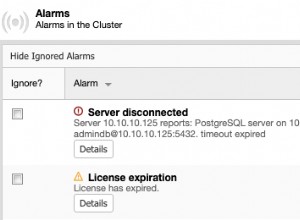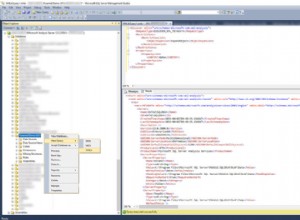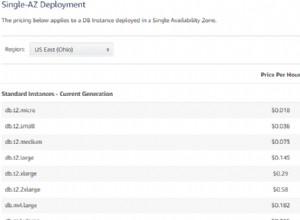Após esclarecimento no comentário.
Sua tarefa como eu a entendo:
Verifique se há todos os indivíduos fornecidos intervalos de datas (
filter ) se eles são cobertos pelo combinado intervalos de datas de conjuntos de códigos em sua tabela (invoice ). Isso pode ser feito com SQL simples, mas não é uma tarefa trivial . As etapas podem ser:
-
Forneça intervalos de datas como filtros.
-
Combinar intervalos de datas eminvoicetabela por código. Pode resultar em um ou mais intervalos por código.
-
Procure sobreposições entre filtros e faturas combinadas
-
Classificar:totalmente coberto/parcialmente coberto.Pode resultar em uma cobertura total, uma ou duas coberturas parciais ou nenhuma cobertura.Reduzir ao nível máximo de cobertura.
-
Exiba uma linha para cada combinação de (filtro, código) com a cobertura resultante, em uma ordem de classificação sensata
Intervalos de filtros ad hoc
WITH filter(filter_id, startdate, enddate) AS (
VALUES
(1, '2012-05-01'::date, '2012-06-05'::date) -- list filters here.
,(2, '2012-05-01', '2012-05-31')
,(3, '2012-06-01', '2012-06-30')
)
SELECT * FROM filter;
Ou coloque-os em uma mesa (temporária) e use a mesa em seu lugar.
Combinar intervalos de datas sobrepostos/adjacentes por código
WITH a AS (
SELECT code, startdate, enddate
,max(enddate) OVER (PARTITION BY code ORDER BY startdate) AS max_end
-- Calculate the cumulative maximum end of the ranges sorted by start
FROM invoice
), b AS (
SELECT *
,CASE WHEN lag(max_end) OVER (PARTITION BY code
ORDER BY startdate) + 2 > startdate
-- Compare to the cumulative maximum end of the last row.
-- Only if there is a gap, start a new group. Therefore the + 2.
THEN 0 ELSE 1 END AS step
FROM a
), c AS (
SELECT code, startdate, enddate, max_end
,sum(step) OVER (PARTITION BY code ORDER BY startdate) AS grp
-- Members of the same date range end up in the same grp
-- If there is a gap, the grp number is incremented one step
FROM b
)
SELECT code, grp
,min(startdate) AS startdate
,max(enddate) AS enddate
FROM c
GROUP BY 1, 2
ORDER BY 1, 2
SELECT final alternativo (pode ser mais rápido ou não, você terá que testar):
SELECT DISTINCT code, grp
,first_value(startdate) OVER w AS startdate
,last_value(enddate) OVER w AS enddate
FROM c
WINDOW W AS (PARTITION BY code, grp ORDER BY startdate
RANGE BETWEEN UNBOUNDED PRECEDING AND UNBOUNDED FOLLOWING)
ORDER BY 1, 2;
Combinar em uma consulta
WITH
-- supply one or more filter values
filter(filter_id, startdate, enddate) AS (
VALUES
(1, '2012-05-01'::date, '2012-06-05'::date) -- cast values in first row
,(2, '2012-05-01', '2012-05-31')
,(3, '2012-06-01', '2012-06-30')
)
-- combine date ranges per code
,a AS (
SELECT code, startdate, enddate
,max(enddate) OVER (PARTITION BY code ORDER BY startdate) AS max_end
FROM invoice
), b AS (
SELECT *
,CASE WHEN (lag(max_end) OVER (PARTITION BY code ORDER BY startdate)
+ 2) > startdate THEN 0 ELSE 1 END AS step
FROM a
), c AS (
SELECT code, startdate, enddate, max_end
,sum(step) OVER (PARTITION BY code ORDER BY startdate) AS grp
FROM b
), i AS ( -- substitutes original invoice table
SELECT code, grp
,min(startdate) AS startdate
,max(enddate) AS enddate
FROM c
GROUP BY 1, 2
)
-- match filters
, x AS (
SELECT f.filter_id, i.code
,bool_or(f.startdate >= i.startdate
AND f.enddate <= i.enddate) AS full_cover
FROM filter f
JOIN i ON i.enddate >= f.startdate
AND i.startdate <= f.enddate -- only overlapping
GROUP BY 1,2
)
SELECT f.*, i.code
,CASE x.full_cover
WHEN TRUE THEN 'fully covered'
WHEN FALSE THEN 'partially covered'
ELSE 'invoice missing'
END AS covered
FROM (SELECT DISTINCT code FROM i) i
CROSS JOIN filter f -- all combinations of filter and code
LEFT JOIN x USING (filter_id, code) -- join in overlapping
ORDER BY filter_id, code;
Testado e funciona para mim no PostgreSQL 9.1.




